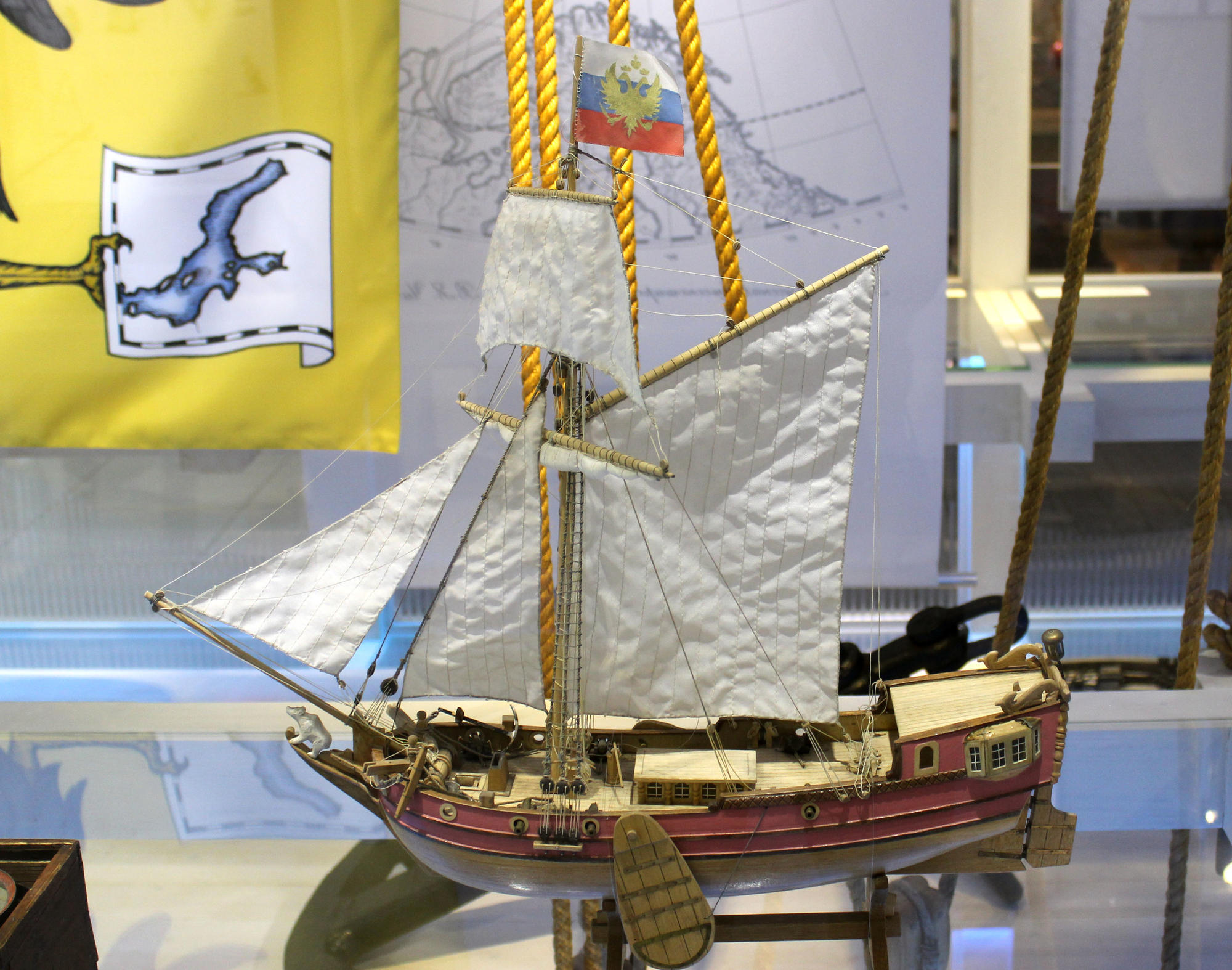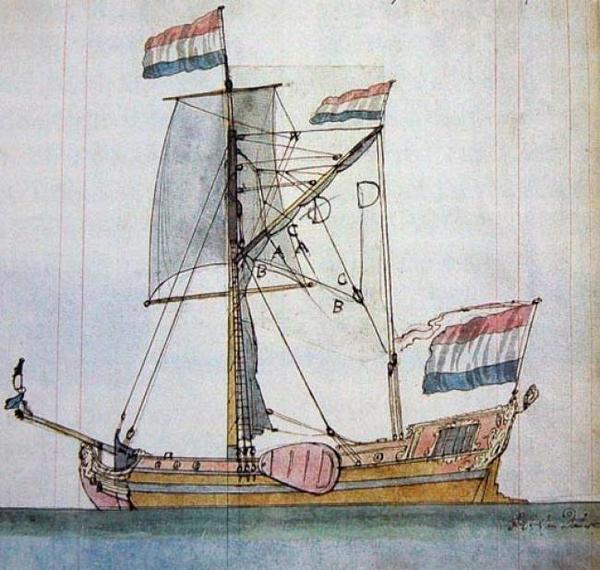There is a model of yacht Svyatoy Petr on the stand, its author is unknown. Neither it is known for sure how this yacht actually looked; therefore it was assembled by virtue of images of Dutch boats built by Hollanders for royal families of those days.
Model of Regal Yacht Svyatoy Petr
Размер
60х59х23 cm
Техника
assembly work
Коллекция
4
Открыть в приложении#1
Unknown Author
Model of Regal Yacht Svyatoy Petr
#3
#8
Dutch 12-gun yacht. A water-color from a sketchbook of naval architect Francisc Carolus van Dove made late in the 17th - early 18th centuries. A similar vessel served as a prototype of yacht Svyatoy Petr built for Peter Alexeyevich in 1693.
#7
In the community of historians, this sailboat is called the pioneering ship built in Russia. Nevertheless, clarification follows now and then, that it was a warship because the boat was equipped with cannons and could seriously retaliate against a foe. Russian merchant and harvesting fleets appeared earlier, approximately one century before the reign of Peter.
The sailboat was built in 1693 at the Arkhangelsk Warf by Dutch shipwrights Georg Jensen and Peter Bas, and she became the first and favorite sea-going yacht of Peter. Skilful wood engravings of decoration were crafted by Russian artisan Fedor Ievlev.
Your attention is called to the fact that nor an ounce of metal neither a nail was used for the yacht construction. Anything looking like a nail is made of wood. The principal tool of the shipwrights was an axe, and the hull planks were stitched with vitsa – fir root, previously soaked in water and therefore flexible and looking like a thick thread. This construction technology was applied not for the yacht only, but for large ladyas and Pomor kochs, too.
The sailboat had one mast with white four-sided and fore-and-aft sails of Dutch type; 12 three-pound cannons were placed astern. To make the boat more stable, balancers were hung up along the side-boards, ‘shvertsy’ as they were called by shipwrights.
The sailboat was built in 1693 at the Arkhangelsk Warf by Dutch shipwrights Georg Jensen and Peter Bas, and she became the first and favorite sea-going yacht of Peter. Skilful wood engravings of decoration were crafted by Russian artisan Fedor Ievlev.
Your attention is called to the fact that nor an ounce of metal neither a nail was used for the yacht construction. Anything looking like a nail is made of wood. The principal tool of the shipwrights was an axe, and the hull planks were stitched with vitsa – fir root, previously soaked in water and therefore flexible and looking like a thick thread. This construction technology was applied not for the yacht only, but for large ladyas and Pomor kochs, too.
The sailboat had one mast with white four-sided and fore-and-aft sails of Dutch type; 12 three-pound cannons were placed astern. To make the boat more stable, balancers were hung up along the side-boards, ‘shvertsy’ as they were called by shipwrights.
#6
Photograph of the Flag of Tsar of Muscovy (1693). Central Naval Museum, Sankt Petersburg
The first boat tour of Peter the Great on board the yacht took place in August 1693 when the Tsar visited Arkhangelsk to see off boats from Holland and England leaving this northern town. He followed them on board the yacht up to the rocky Kola Peninsula. And, in the opinion of witnesses whose memoirs are kept in Solovki (Solovetsky Islands) Museum, Peter the First was very happy with the vessel, gave credit to her comfort and admired the masterful wood engravings of enrichments.
In a year, Peter once again undertook a pleasure tour from Arkhangelsk under canvas while seeing off just another company of merchant boats. But that time he also sailed to Solovetsky Islands, rubbed elbows with, checked up on the living of ordinary people and only then accompanied Dutch boats until the Svyatoy Nos Cape at the exit to the ocean.
Svyatoy Petr became the first Arkhangelsk museum exhibit and at that, the decisiom to convert the yacht into a museum came from Tsar himself who prescribed in 1723 ‘to accommodate the carcass in a convenient place and give order to preserve’. To tell the truth, the carcass was preserved not for long, 6 years only, and collapsed then.
In 2013, the construction of the replica of the Tsar’s favorite yacht was completed by Russian craftsmen at the museum wharf of Solovetsky Islands. Nowadays she is used for scientific researches and expeditions in the northern water area.
In a year, Peter once again undertook a pleasure tour from Arkhangelsk under canvas while seeing off just another company of merchant boats. But that time he also sailed to Solovetsky Islands, rubbed elbows with, checked up on the living of ordinary people and only then accompanied Dutch boats until the Svyatoy Nos Cape at the exit to the ocean.
Svyatoy Petr became the first Arkhangelsk museum exhibit and at that, the decisiom to convert the yacht into a museum came from Tsar himself who prescribed in 1723 ‘to accommodate the carcass in a convenient place and give order to preserve’. To tell the truth, the carcass was preserved not for long, 6 years only, and collapsed then.
In 2013, the construction of the replica of the Tsar’s favorite yacht was completed by Russian craftsmen at the museum wharf of Solovetsky Islands. Nowadays she is used for scientific researches and expeditions in the northern water area.
#9
State Northern Maritime Museum
читать дальшескрыть
00:00
00:00
1x
Model of Regal Yacht Svyatoy Petr
Размер
60х59х23 cm
Техника
assembly work
Коллекция
4
Открыть в приложении
Поделиться





